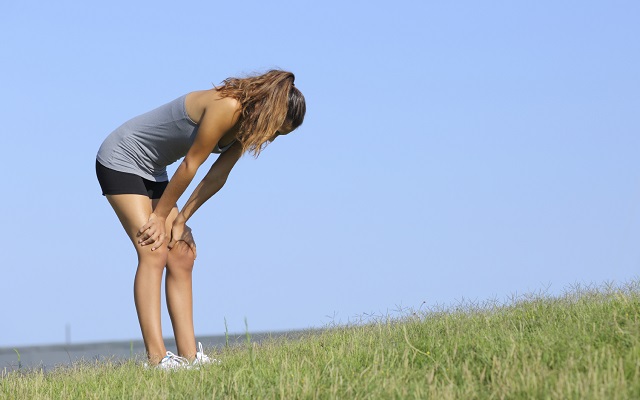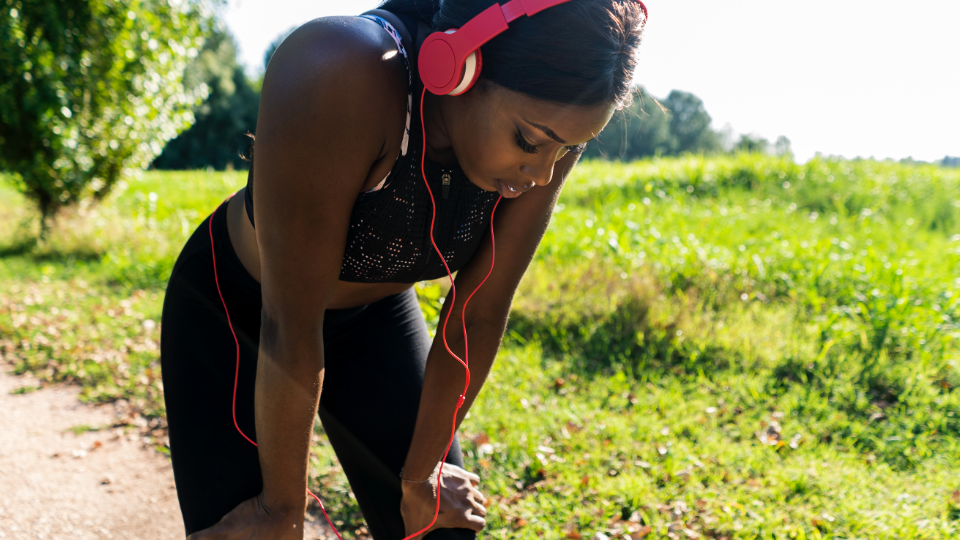The last thing you want is to get an upset stomach during your run. Unfortunately, gastrointestinal distress is all too common among runners. It’s often caused by a variety of factors—physiological, mechanical, and nutritional—but you can do something about your GI problems.
Before a competition, reduced blood flow and increased anxiety are your common culprits.
During intense exercise like running, your body diverts blood flow to muscles and away from the gut by a much as 80 percent (1). When your stomach and intestinal activities slow down, it causes cramping.
Anxiety also influences hormone secretion that can affect gut movement, resulting in incomplete absorption of food or lead to loose stools.
Mechanical issues in your gut occur from either excessive, repetitive impact from the feet striking hard surfaces or from poor posture alignment during the run. Relatedly, GI bleeding is not uncommon among elite runners as a result of repetitive, high-impact damage to the intestinal walls (2). The constant bouncing of your stomach during runs is also thought to contribute to GI symptoms such as gas, diarrhea, and a sudden urge to use the restroom. The longer the distance, the greater the rate of GI problems (2).
Your diet also has a large influence on GI function. The amount of fiber, fat, protein, and sugar intake in the diet are all associated with a greater risk to develop GI distress (3). Low fluid intake can worsen symptoms, but sports drinks that are too sugary may exacerbate problems. For some runners with mild lactose intolerance, milk may also promote GI distress.
Need a solution? You can reduce the risk of having GI problems during your runs by watching your diet and hydrating adequately. Here’s a list of steps that can help keep you in the clear of digestive issues during your next long run.
1. Avoid high-fiber foods before your run.
Avoid high-fiber foods on the day or even days before a competition. For the athlete in training, a diet with adequate fiber will promote regularity, but fiber before race day is different.
By definition, fiber is not digestible so any fiber that is eaten essentially passes through the gut. Increased bowel movements during exercise are not desirable and can actually accelerate fluid loss. You don’t want unnecessary gas production that might cause cramping. Especially for those individuals who are prone to develop GI symptoms, a low-fiber diet the day before a competition is recommended (3).
Normally we’d suggest your diet be high in fiber with plenty of whole grains. But runners can do better limiting these foods and instead opting for regular pasta, white rice, and plain bagels. Additionally, keep in mind that fruits and vegetables are high in fiber. However, there are a few exceptions: zucchini, tomatoes, olives, grapes, and grapefruit all have less than 1 gram of fiber per serving.
2. Stay hydrated, but avoid milk and drinks with excess sugar.
Dehydration can exacerbate GI symptoms. For this reason, staying hydrated is of utmost importance throughout your run.
But for those with even mild lactose intolerance, it’s important to avoid milk products that can cause problems during exercise. For these individuals, IsaLean® Shake is usually well tolerated as a source of quality protein because of its content of lactase to support those with lactose intolerance.
In addition, you should avoid beverages that have excessive amounts of sugar, particularly from fructose. A little fructose as part of fruit or a meal is fine, but excessive levels can lead to GI problems for runners.
For example, the sugar in fruit juice is almost exclusively fructose. Because fructose is absorbed into the intestines more slowly—it’s a low-glycemic sugar—its tolerance for runners is much less than glucose and can lead to cramping, loose stools, or diarrhea.
Note that fructose used in combination with glucose in the right ratio is shown to be easier to digest for endurance athletes—as with the carbohydrates found in AMPED™ Fuel. AMPED Hydrate (formerly Replenish™) also combines moderate amounts of glucose and fructose in a ratio that’s easily tolerated by runners while providing electrolytes and vitamins that are depleted during your training.
3. Stick with what you’re used to on race day.
Think of your GI tract as having its own unique personality. In this case, its personality is to be shy. Sure, your GI tract has learned to get along well with foods you eat normally. But when you introduce it to new foods, you create an awkward situation.
If you stick with foods you normally consume, you’re less likely to experience GI distress. But if you tend to avoid carbohydrates in daily life, you may not be able to absorb all of the ingested carbohydrates well on race day. A good recommendation is to adapt your training so that you’re using the same foods on race day that you trained with throughout. It’s not a good idea to try something completely new on race day.
References
- Qamar MI and Read AE. Effects of exercise on mesenteric blood flow in man. Gut. 1987;28:583–587.
- Moses FM. The effect of exercise on the gastrointestinal tract. Sports Med. 1990;9:159–172
- de Oliveira EP, Burini RC and Jeukendrup A. Gastrointestinal complaints during exercise: prevalence, etiology, and nutritional recommendations. Sports Med. 2014; 44 Suppl 1: S79-85.





